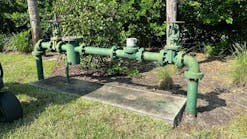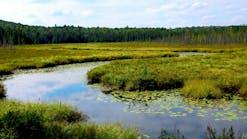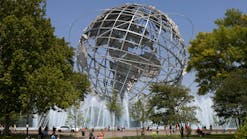What happens when we die? Allow me to rephrase: what happens to our bodies when we die?
The earth is, generally, a great filter. Slowing down and infiltrating stormwater reduces pollutants and recharges aquifers and groundwater supplies. But as we know, anything that goes in or on the ground has the potential to impact stormwater and, ultimately, the health of our streams, rivers, oceans, and drinking water. And whether cremated or buried, our bodies generally end up in or on the earth. What effect, if any, do cemeteries and body disposal have on the groundwater?
Perhaps the most obvious concern is that fluids used for embalming will leach into the groundwater. According to the Smithsonian, embalming became popular in the Civil War, when embalmers used arsenic—sometimes as much as 12 pounds per body—to preserve soldiers’ remains on the long trip home. While the practice was banned in 1910 because of the extremely harmful effects on embalmers, researchers in the 1990s found arsenic near Civil War-era cemeteries in water samples taken from hand-pumps, in cemetery soil, and in down-gradient groundwater. While levels were generally low, two sites had arsenic levels above the drinking water standard. No large-scale studies have been conducted in Canada or the US.
Well, you might think, at least we’re not using arsenic anymore! But modern funerary customs come with their own risks to groundwater. Today, embalming fluid relies on formaldehyde, a known carcinogen. Embalmers have higher instances of leukemia and other kinds of cancer and can suffer from a skin condition known as “embalmer’s eczema.” Formaldehyde generally breaks down quickly in air, soil, and water, but it takes time to exit the body and there is some concern about the amount of embalming fluid being buried each year—The New York Times reports it’s about 4.3 million gallons. That could be a problem if and when a cemetery floods. In 2015, the Belfast Telegraph reported that several graveyards in Northern Ireland had flooded, leading to complaints of a horrible smell, which, when combined with other symptoms they had experienced, gravediggers believed was from formaldehyde.
Others have argued that the largest potential soil and water contaminant source in cemeteries comes from coffins. In a case study published in the International Journal of Environmental Research and Public Health, researchers suggested that as the treated woods, paints, varnishes, and metal decorations used to make coffins break down, chemicals and heavy metals have the potential to negatively affect soil and water. For all but four of the 31 toxic minerals they tested for, researchers found at least double the amount in soil samples from cemeteries than from offsite soil samples.
Embalming and coffins primarily serve to delay decomposition, prolonging any possible contamination period. Suppose in response to all this contamination concern, then, someone opts for a “green burial”—no embalming and in a biodegradable casket or shroud. Not only does it limit the chances for heavy-metal contamination, but the body will decompose more quickly, an added bonus for those worried about the grave-space shortage. Green burials tend to be closer to the surface, where the nutrient-rich soil helps speed decomposition. The human body does house a number of potentially harmful microorganisms that can enter the soil and groundwater during decay, but a review of the impact of cemeteries on groundwater, published in the Journal of Water and Health, shows they generally die off fairly quickly outside the body, especially if burials are above the water table.
All of this considered, what dangers do cemeteries actually pose to the general public? Ordinarily, very little. Those who maintain and plan cemeteries today are aware of the risks and write laws and legislation accordingly. In the UK, for example, regulations dictate how far from potable and nonpotable water sources burials must be and require at least 1 meter (or just over 3 feet) between the bottom of the grave and the water table (allowing for seasonal flooding and extreme rainfall). Among other things, the Journal of Water and Health review recommends trees with deep root systems as buffer zones around cemeteries, good stormwater drainage systems in cemeteries and surrounding neighborhoods, and regular groundwater monitoring.
So, knowing that the dead aren’t likely to disturb us from the grave, we can turn our attention back to larger questions: what does happen when we die?
Rachel Sim | Editor
As the editor of Stormwater magazine from June 2019 to December 2020, Rachel Sim created and curated quality content addressing the challenges faced by surface water and erosion control professionals, focusing on cutting-edge technology and the latest environmental research.






